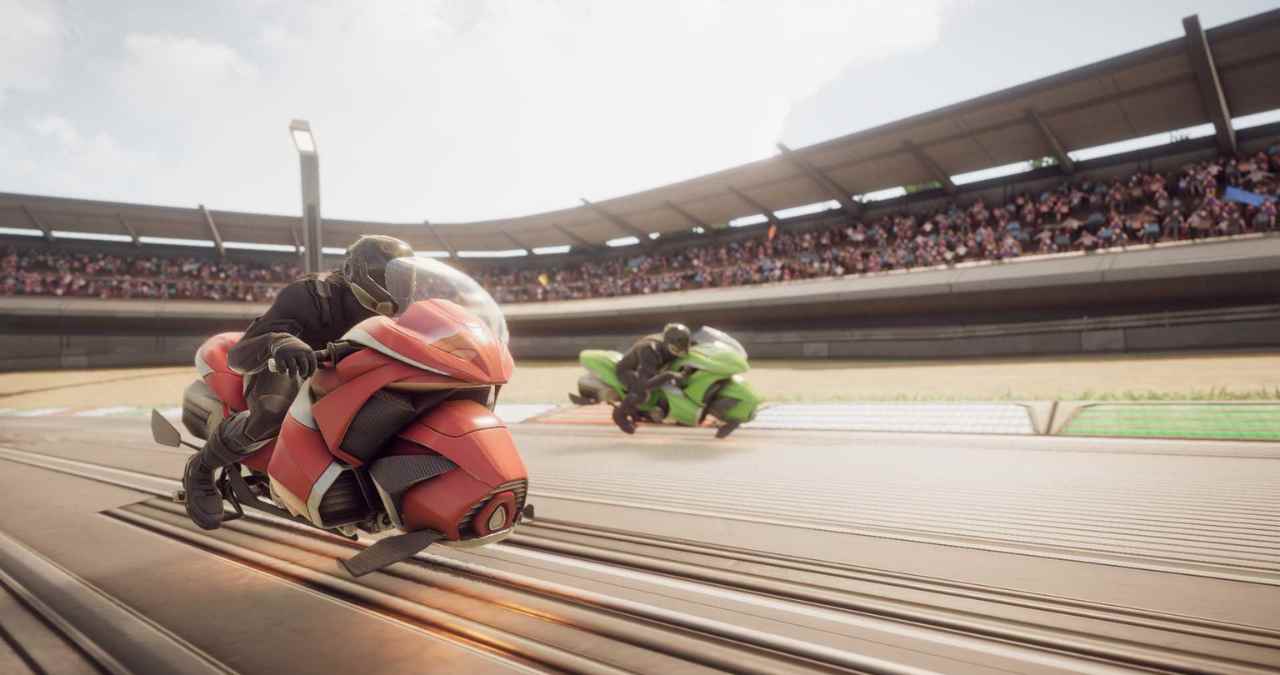Hoverbike Racing Gets Its VR Moment
VRacer Hoverbike has officially touched down on Meta Quest, dropping players into the cockpit of a gravity-defying bike and launching them across neon-lit circuits that twist through air and tunnel. It’s not just fast — it’s physically reactive, with gameplay centered around player balance, positioning, and inertia.
The game focuses on immersing you in the feel of speed and flight, using motion-based controls that mimic body lean and grip. A PSVR2 version is also in the works, aiming to bring the same motion-focused experience to Sony’s headset later on.
Full-Body Racing With VR Movement at the Core
Instead of joystick-heavy driving, VRacer Hoverbike makes you move. Riders lean into turns, shift weight in real time, and steer by physically tilting and adjusting their virtual body. That control scheme doesn’t just feel different, it changes how the game plays — you’re not piloting a bike, you are the bike.
Acceleration, braking, and directional changes are responsive but punishing if mistimed. Every jump, slide, or crash is the result of how well you handle the momentum. It’s part racing sim, part VR balance challenge, and it’s clearly designed for motion-first gameplay, not casual inputs.
Track Design Pushes Verticality and Precision
The tracks in VRacer Hoverbike don’t just go forward. They drop, loop, corkscrew, and sometimes leave you suspended in anti-gravity tunnels. The layouts demand quick reaction and body control, but they’re also built to be read visually — with clear cues for drift zones, boosts, and airborne segments.
This vertical design sets it apart from flat racers. You don’t just learn corner timing, you learn angles, height shifts, and how to keep momentum through twists. It’s a style closer to Wipeout or Redout, but stripped down for immersive VR execution.
Visuals Balance Sim Style With Arcade Energy
Aesthetically, VRacer Hoverbike sticks to clean lines and sci-fi minimalism. The bikes look functional but stylized, with enough HUD elements to feel cockpit-ready without overwhelming the view. Lighting is sharp, with tracks lit by neon trails, tunnel glows, and skybox reflections that give each race a strong visual rhythm.
The visual tone feels intentional: not gritty, not cartoonish, just sleek. It supports the game’s focus on movement and reaction without fighting for attention.
PSVR2 Version Will Bring Haptics and Visual Boosts.
The PSVR2 release is expected to carry over the full experience, with enhancements for haptics, adaptive triggers, and visual polish thanks to the headset’s OLED display. The real-time tracking on PSVR2 should also reinforce the body-based controls that are core to the game.
There’s no hard release date yet, but the Quest version sets the tone — and it’s likely the PSVR2 build will follow with performance tweaks more than feature changes.
A Tight, Focused VR Racer for Players Who Want to Move
VRacer Hoverbike isn’t sprawling with modes or flooded with unlocks. It’s lean and built around a specific idea: immersive, motion-driven racing that treats the player’s body as the controller. That focus gives it a clarity that a lot of VR racing titles struggle to hit.
Whether it becomes a mainstay depends on how much post-launch support arrives and whether new tracks or multiplayer updates keep the pacing fresh. But for now, it’s a clean, demanding, and physical VR racer that isn’t afraid to make you earn every corner.
Virtual Reality Explorer & Game Reviewer
Always the first to plug in. VRSCOUT dives head-first into the most immersive VR worlds, analyzing mechanics, comfort, innovation, and that elusive “presence” factor. If he says it’s worth it, it probably is.




